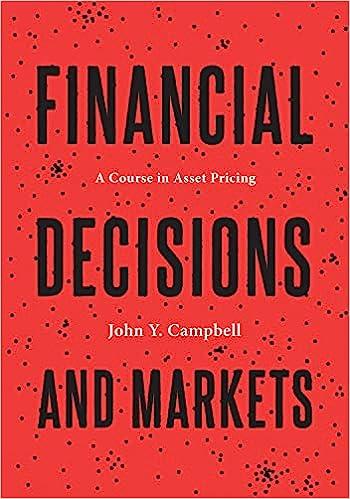Let Y 1 , Y 2 , Y 1 , Y 2 , be independent
Question:
Let be independent and identically distributed (iid) non-negative random variables with mean one. For greater than or equal to one, define .
(a) Show that for all .
(b) Let . Show that . Under what conditions does ?
(c) is a non-negative martingale, so its limit as increases exists and is finite almost surely. Call this limit . A result of Kakutani, applied to finance by Martin (2012), can be stated as follows in this example. If . Otherwise, . Explain intuitively how it is possible to have both for all and .
(d) Consider an asset with iid gross returns and an iid stochastic discount factor Define the risk-adjusted value of the asset at time as . Define the limiting risk-adjusted value in the infinite future as . Show that there is a unique asset and SDF for which . Otherwise, . For what asset and SDF do we have ?
(e) For any other asset, explain intuitively how it is possible to have for all despite the fact that . Illustrate your mechanism by reference to the properties of the gross return series, and then by reference to the properties of the SDF series. Discuss the economic difference between these two cases.
Step by Step Answer:

Financial Decisions And Markets A Course In Asset Pricing
ISBN: 9780691160801
1st Edition
Authors: John Y. Campbell





